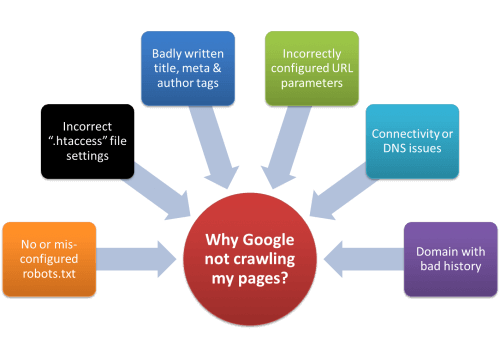Creating HTML emails is just the start—ensuring it renders perfectly across inboxes, devices, and email clients is what separates a good emailer from a great one. While older tricks like pasting HTML into Outlook via the clipboard can work, they’re error-prone and outdated in today’s complex email landscape.
In this guide, we’ll walk you through a modern, reliable 6-step process to test and send emailers with confidence.
Why the Old Clipboard Method No Longer Cuts It
Some still copy HTML email content from a browser and paste it into Outlook. While this can embed visuals, it often results in:
Broken layouts in Outlook due to its Word-based rendering engine
Lost styles and non-responsive emails
Missing or blocked images
Inconsistent experiences across Gmail, Apple Mail, and mobile apps
It’s time to modernize.
Modern 6-Step Process to Test & Send HTML Emails
Prerequisites
A well-designed HTML email
Image assets hosted securely (e.g., CDN, ESP media library)
Access to email testing tools (see tools list below)
Step 1: Build Your Email with a Professional Editor
Why this matters:
Hand-coding emails can be risky due to the inconsistent rendering engines used by email clients (especially Outlook). A professional email builder ensures your HTML is:
- Responsive (mobile-friendly)
- Inline styled (for older clients)
- Tested for compliance with major ESPs
Use a drag-and-drop email builder that outputs responsive and standards-compliant HTML:
- Stripo – Supports AMP, dynamic content, and custom blocks
- BEE – Great UI, free to start, easy exports
- Mailchimp – Useful if you’re already using it as your ESP
- Unlayer – Developer-friendly embeddable editor
These tools allow:
- Device previews
- Export to HTML
- ESP integrations
Best Practice Tips:
- Start from tested templates
- Avoid external CSS—use inline styling
- Use
<table>-based layout (still safest for compatibility) - Include
alttext for all images - Keep the width within 600–800px for best rendering
Step 2: Test Email Rendering Across Clients
Why this matters:
Your email may look perfect in Gmail but break completely in Outlook. You need to test across dozens of environments to ensure consistency.
Use tools like:
- Litmus or Email on Acid – Test rendering across 100+ email clients and devices (Outlook 2016, Apple Mail, Android Gmail app, etc.)
- Mailtrap – test email delivery and spam score without hitting real users.
- PutsMail – Send real test HTML email to your inbox
What to check:
- Font rendering
- Line spacing and alignment
- Button size and CTA visibility
- Image display and scaling
- Mobile stacking and responsiveness
Step 3: Host Images Securely
Why this matters:
Embedded or base64 images might be blocked, inflate email size, or fail to load—especially in Gmail and Outlook. Properly hosted images ensure:
- Fast load times
- Reliable image rendering
- Trust (due to HTTPS URLs)
Avoid embedding images with base64 or CID unless absolutely necessary. Instead:
- Upload images to a CDN, ESP-hosted media folder, or your own secure HTTPS server.
- Use absolute image paths in your HTML (e.g.,
https://mydomain.com/assets/logo.png).
Pro Tips:
- Keep file sizes low (<200KB per image)
- Use modern formats like
.webpif supported - Optimize for retina displays (2x resolution if needed)
Step 4: Test Deliverability and Spam Score
Why this matters:
Your beautifully designed email won’t matter if it lands in spam. Spam filters look at your content, sender reputation, domain settings, and HTML quality.
Use:
- Mailtrap’s spam analysis – Test for spam scores and HTML compliance
- Google Postmaster Tools (for domain reputation) – Monitor sender reputation and bounce rates
- Send test via your ESP to check:
- DKIM, SPF, and DMARC alignment
- Inbox placement (not spam or promotions)
What to validate:
- SPF/DKIM/DMARC are properly set on your domain
- Subject line is not spammy (avoid “free”, “buy now”, “!!!”)
- Avoid too many links or large image-to-text ratios
- Test with seed list across Gmail, Outlook, Yahoo, etc.
Pro Tips:
- Always include an unsubscribe link
- Use a plain-text version alongside your HTML
- Avoid hidden text, base64, or obfuscated code
Step 5: Send Tests to Real Inboxes for Live Preview
Why this matters:
Even with rendering tests, nothing beats checking how it looks to real users. This ensures you’re catching issues with:
- Load times
- Email previews and snippets
- Display in light/dark modes
- Visual hierarchy and spacing
How to do it:
- Send test emails to yourself and team
- Check on multiple devices:
- Gmail (Web, Android, iOS)
- Outlook (Windows desktop + web + mobile)
- Apple Mail (Mac + iPhone)
- Yahoo, ProtonMail, others if relevant
What to observe:
- Subject line and preview text appearance
- CTA placement on mobile vs. desktop
- Clarity of images and fonts
- Tracking pixel loads (if you use analytics)
Pro Tip:
Use seed lists and A/B variants to test alternative subject lines or headers.
Step 6 (Optional): Save as Outlook .MSG File
Why this matters:
In some enterprise environments, marketing or compliance teams require an .MSG file preview before a bulk send—especially if Outlook is the dominant client.
If your company still requires Outlook .msg previews for internal approvals:
Send email to yourself via Outlook
Drag the email to desktop or
Save As→.msg
This ensures stakeholders can preview the exact format.
Pro Tips:
- Make sure to test the
.msgin different Outlook versions (some use Word-based rendering) - Confirm images and formatting remain intact after saving
- Avoid sending actual test blasts to stakeholders—they may forward them and skew your metrics
Bonus Tips
- Keep subject lines clear and under 60 characters
- Always include an unsubscribe link (to comply with CAN-SPAM & GDPR)
- Avoid JavaScript, background videos, and form elements in email HTML


